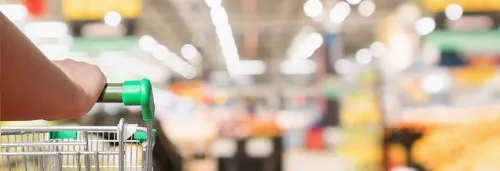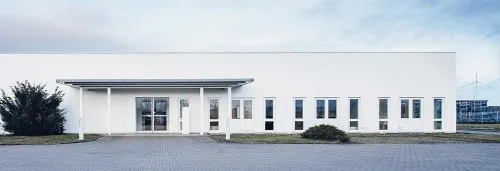
Packaging and logistics: Innovative concepts for the future
- Faster deliveries, less packaging - these are the challenges that the packaging industry and logistics sector are increasingly having to deal with.
- The e-commerce sector is growing and with it the requirements: More parcels, smaller deliveries, countless different products, maximum security at all stages between the factory and the customer.
- Packaging industry and logistics sector need innovative solutions - we present current fields of action and options for the future.
TRENDS AND CHALLENGES FOR THE LOGISTICS AND PACKAGING INDUSTRY
It goes without saying that logistics companies must also adapt to digitization and Industry 4.0. Yet these terms only very roughly describe the range of social, economic and technological trends that will become relevant in the near future - if they are not already.
Key factors for the e-commerce age
With each passing year, online commerce becomes more important and with it the question of how to handle an ever-increasing volume of parcel shipments as quickly and efficiently as possible. In 2019, Germans sent a total of 3.65 billion shipments by courier, express and parcel services, and Deutsche Post alone transported more than 1.5 billion parcels in the same year.
.png)
Fast deliveries, subscription services and the variety of products available online are a challenge not only for logistics as such, but just as much for packaging. Not least because packaging is
- should be robust and safe,
- meet the aesthetic requirements of the customers as well as
- should be recyclable for more sustainable, waste-reduced shipping.
The DHL Logistics Trend Radar makes it clear that the logistics and packaging industries are equally in demand on these points. The study sees the most important aspects in the following areas:
- Higher packing density prevents damage to the packaged goods, and an optimal ratio of product, carton and pallet ensures more efficient transport. In addition, perfectly adapted packaging reduces overall logistics costs.
- Faster shipping is possible because work steps such as unloading, final packaging and labeling are automated. Manufacturers, online retailers, intermediaries - they can all send ordered goods from their warehouses to their customers more quickly.
- More online orders on the one hand, more environmental awareness on the other: customers want more sustainable alternatives to conventional packaging such as disposable plastic sleeves. For the manufacturing companies, however, this raises the question of the cost of developing environmentally friendly packaging. The main issues here are the high acquisition costs for the necessary new technologies on the one hand and the often still low demand for such products on the other.
- Reusability is an important topic. What has been established for a long time for the beverage industry still poses challenges for other industries - in reusable systems, issues have to be addressed including cleaning, maintenance, reverse logistics and, last but not least, suitable materials.
- Packaging can do more, for example with the help of smart packaging technologies. In this context, smart labels are just one of many possibilities that offer customers additional functions (diagnosis of the contents, product information or marketing functions such as augmented reality, etc.).
Packaging and the optimization of the value chain
The Fraunhofer Institute for Material Flow and Logistics (IML) already pointed out a few years ago what will be increasingly important in the future when it comes to packaging and logistics. The overlaps with the DHL Logistics Trend Radar can hardly be overlooked, for example in the optimization of packaging:
According to Fraunhofer IML, the maximum capacity of EUR pallets is often not utilized at all; on average, the load comes to 20 to 30 percent of what would be possible. The situation is still similar with transport packaging, often less than 20 percent of the pack volume is utilized.
.png)
This is not only questionable from the point of view of sustainable use of resources, but also affects the stability and safety of packaging and loading units. Incorrect dimensioning therefore causes several hundred million euros in damage every year - even during transport.
Packaging cost factor
Optimized packaging sizes are therefore definitely a cost factor, especially since packaging costs have an impact in many ways. According to Fraunhofer IML, direct packaging costs, such as those for purchasing, only account for between 25 and 40 percent of total costs.
The "rest" is accounted for by "indirect" costs for logistics that are nevertheless related to packaging: Transport, returns, handling, breakage, storage space requirements, losses and some other factors thus account for between 70 and 75 percent of logistics costs.
A holistic view of the individual cost factors (material, storage, transport, handling, administration) can help with greater cost efficiency, as can software-supported processes for packaging optimization or modular, standardized packaging.
Labelprint24 offers an efficient solution with custome-made cartons-made cartons to significantly reduce shipping costs, for example. Because the larger the packaging, the more expensive the shipping. Our customers can therefore save real money with a precisely fitting packaging size.
E-commerce as a driver: more efficiency, more sustainability for packaging and logistics
The more online trade grows, the more important the role of packaging becomes. This is because more and more goods and merchandise are being shipped in ever smaller quantities. Without appropriate optimization, this inevitably means a higher volume of packaging waste as well as higher costs for more packaging material, shipping and transport.
Nobody wants that, neither customers nor companies. A new understanding of packaging within logistics is therefore needed - in order to draw the right conclusions for new solutions.
.png)
The e-commerce effect
A central factor in this context: the rapid development of e-commerce as a retail sales channel for an almost unmanageable number of different products. The effects can be felt in many places: More and more people can order more and more products at any time and expect speedy delivery.
Online retailing has significantly changed people's buying behavior - and likewise their expectations of delivery times, the buying experience and packaging. Even the B2B sector has long since ceased to be exempt from these changes. On the contrary, the expectations placed on logistics and packaging here are indistinguishable from those in the B2C segment.
However, the conditions are completely different, especially in comparison to bricks-and-mortar retail. Starting with the fact that a package for e-commerce is moved 20 times more frequently on its journey from the manufacturer (of the packaged goods) to the customer or a possible return than is necessary in retail.
This means a correspondingly large number of points along the way where, for example, improper handling can lead to damage. On the other hand, innovative logistics solutions such as delivery by drone or autonomous delivery vehicles also require new solutions to transport packages safely and accident-free.
Unattended package handovers, where customers are not present, only reinforce the need to take effective measures to ensure the security of deliveries. In such cases, the goods shipped may need to be protected against adverse weather conditions and theft. All of this remains linked to the desire for greater sustainability.
More data for better packaging
Greater efficiency in packing density - so that as little available packaging volume as possible is wasted because it is not filled with goods in the first place - is desirable, but a complex task because of today's product diversity and the speed of supply chains and new product lines.
- Data-based pack improvement is a possible solution approach, whereby the dimensions and physical properties of all goods that need to be packed are recorded. However, in many cases the necessary data is not available or it changes too quickly because of new products.
- Camera systems in conjunction with appropriate software can record the dimensions of products, packaging and pallets with extremely small deviations.
This allows both packages and pallets to be packed efficiently. Prior scans and measurements of products, for example, allow machines equipped with continuous corrugated boards to provide very specific packaging for the different products.
Automated packing processes bring more efficiency
The automation of packing processes is a logical step for logistics: more deliveries, which can be ordered at any time and should reach the customer in the shortest possible time, can hardly be handled without machine support in today's dimensions.
- In end-of-line packaging, all steps from folding the box to filling it and personalizing the outside of the package are automated. This is made possible by 3D scanning systems. These capture the items to be shipped and provide suitable packaging.
- Automated systems can also be used for unloading, which quickly becomes a physical burden due to the large number of packages. Artificial intelligence is also capable of monitoring transport and distribution processes.
Sustainable packaging for logistics
More environmentally friendly packaging is an important issue in both the B2C and B2B sectors. E-commerce generates enormous quantities of cardboard boxes and disposable plastic packaging. There is room for improvement in many areas:
- Pallets are mainly secured with shrink wrap because it is inexpensive, versatile and exceedingly effective when it comes to securing such loads. Recyclable plastic films or fiber-plastic composites are conceivable alternatives, plus there are also reusable strap systems - which in turn require return and different handling of the load.
- Reclosable plastic sleeves are used for fashion in particular, but they are rarely used more than once. Alternatives consist of recycled materials from previous deliveries or bio-based materials, some of which can also be composted.
- Similar solutions are also available for polystyrene packaging and filling material. Alternative options are produced on the basis of mushrooms or grass. However, they are still considered too expensive compared to conventional options. In principle, the packaging made from mushroom fibers even retains its shape permanently, but in practice - like similar alternatives - they are more likely to be recycled than used repeatedly.
Adaptation and change for the future
The demands on the packaging and logistics industry are increasing. Both the demands of customers and the needs of specific industries (especially in the technology and healthcare sectors) require new approaches - along the entire production and supply chain.
Adaptation and change take place in the area of tension between overarching trends and individual solutions. More data for optimized packaging, automated processes, circular economies for packaging and more sustainable packaging materials are four of the key factors in developing cost- and resource-efficient, fast and safe solutions for a demand that continues to grow.
These articles may also interest you:

Good Manufacturing Practice: Guidelines for good manufacturing practice
When quality deviations occur in the composition of pharmaceuticals, cosmetics, food and feed, this usually means negative health consequences for consumers. Good Manufacturing Practice (GMP) therefore provides comprehensive guidelines for quality assurance.

Consumer monitoring: What do consumers expect from packaging?
Consumers are becoming more reflective of their consumption behavior, which is why the type of packaging and its properties are playing an increasingly important role in their purchasing decisions. Above all, customers are demanding more sustainability in all areas of consumotion.

Zeithain prints labels for half of Europe
This is supposed to be a print shop? There's not a trace of printer's ink. Instead, spotless white rolls of paper are stacked in rows, and a cleaning machine rolls almost silently across the bare plastic floor. Half a dozen employees disappear between cuboid machines that, despite their size, only emit a half-loud click and hum.




